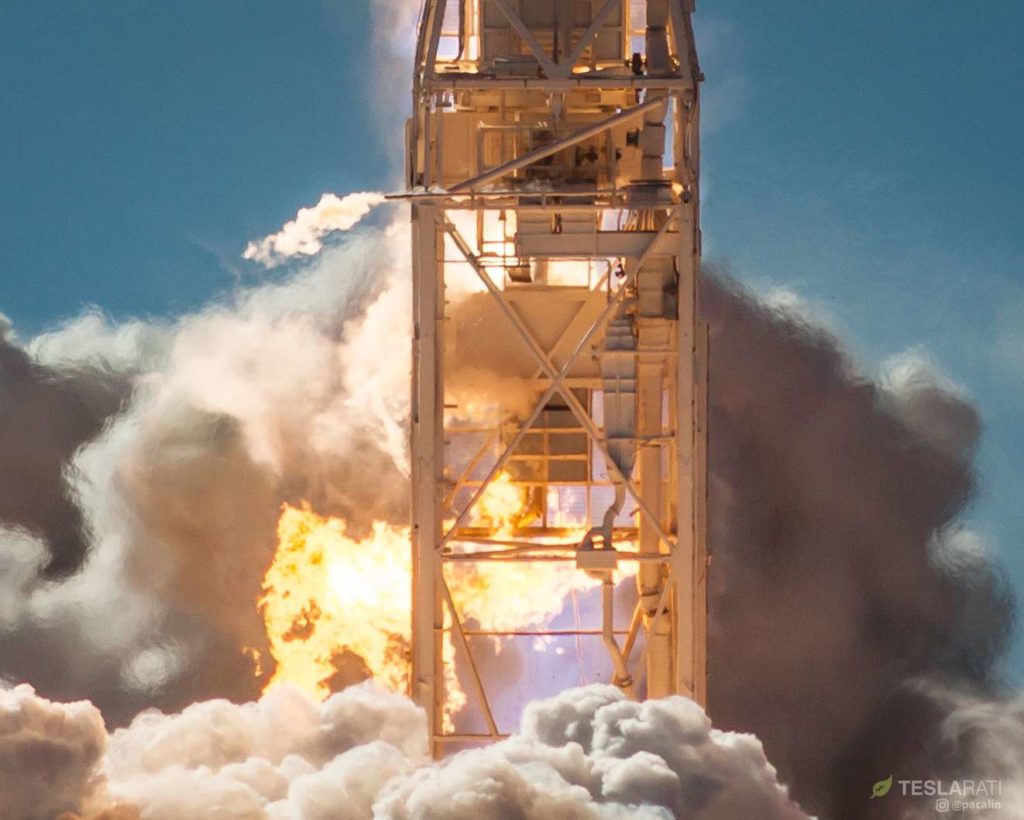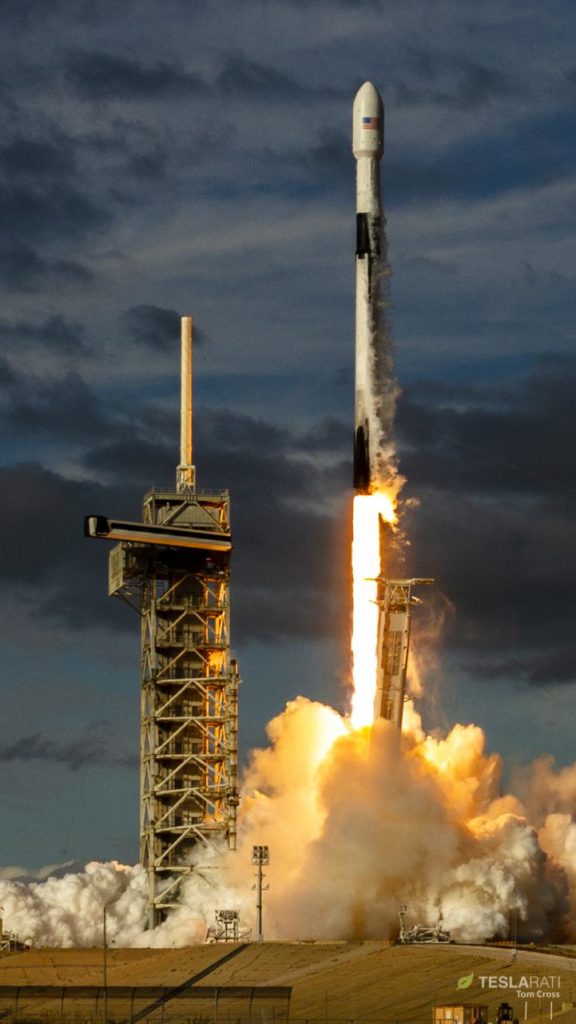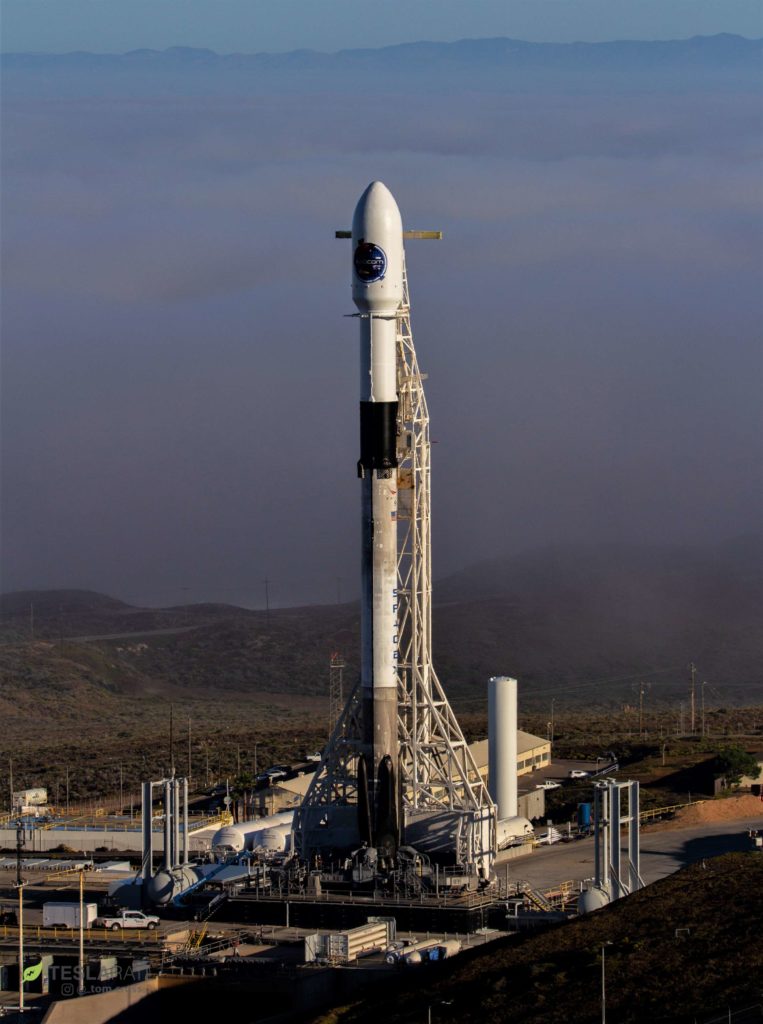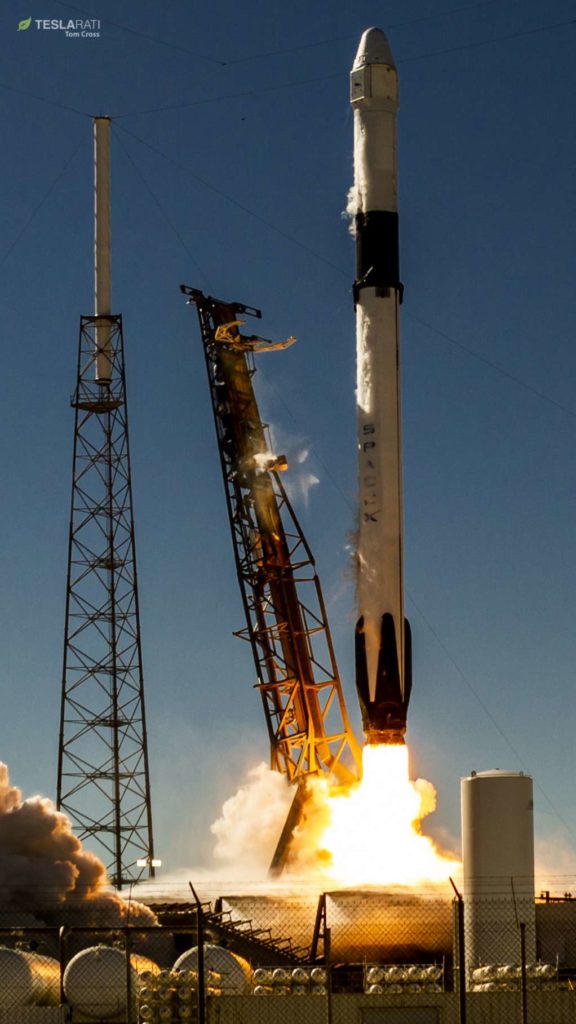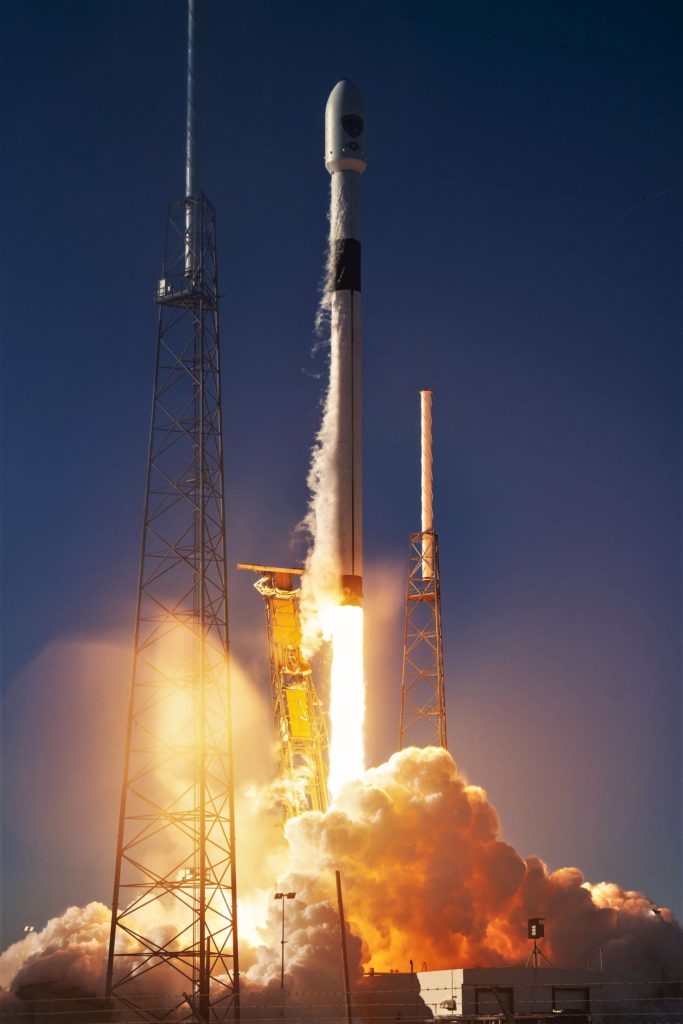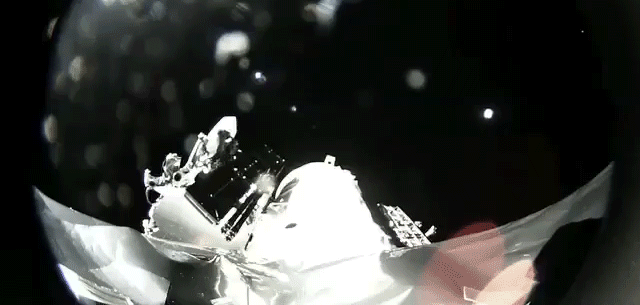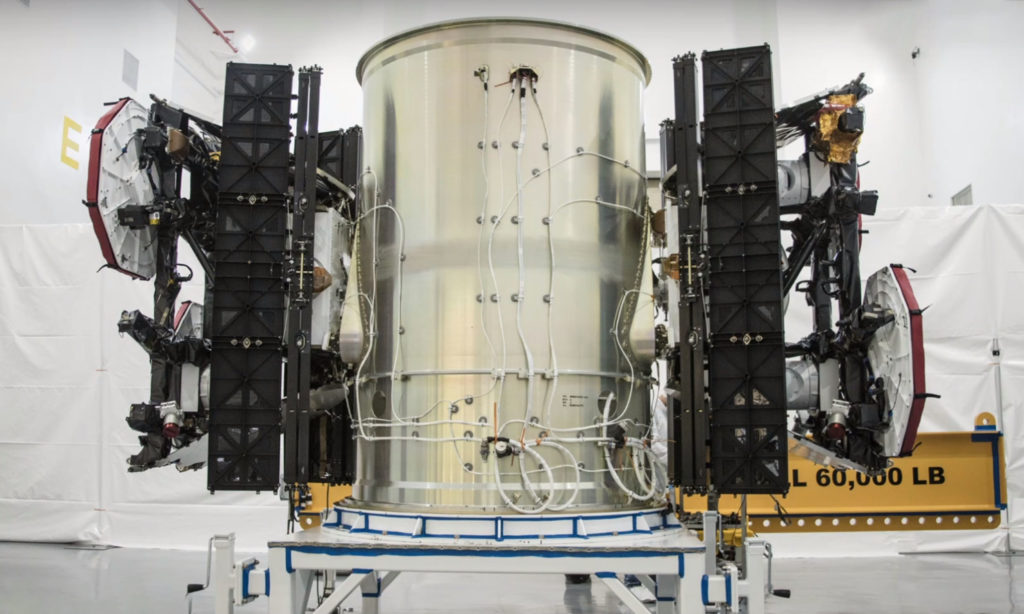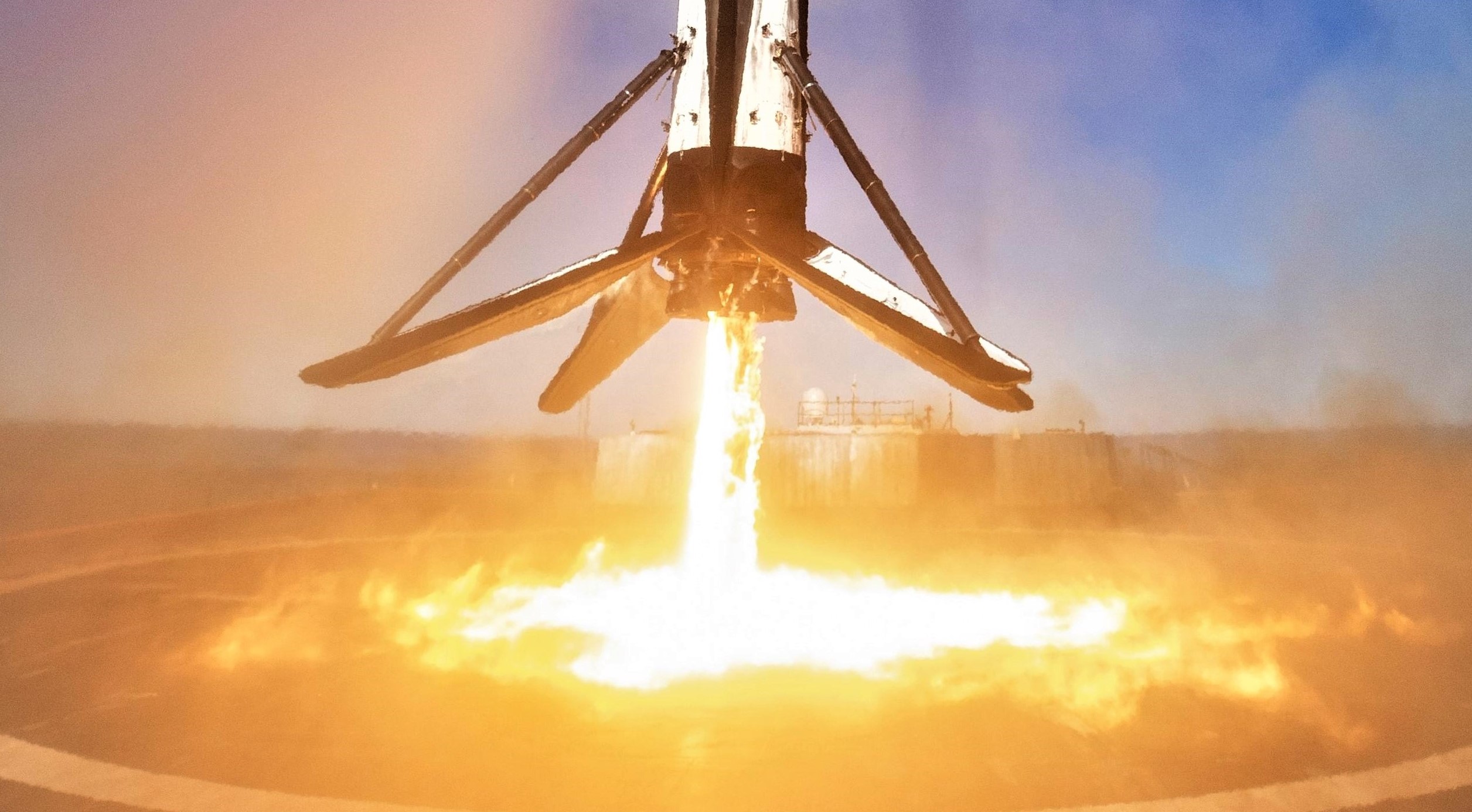
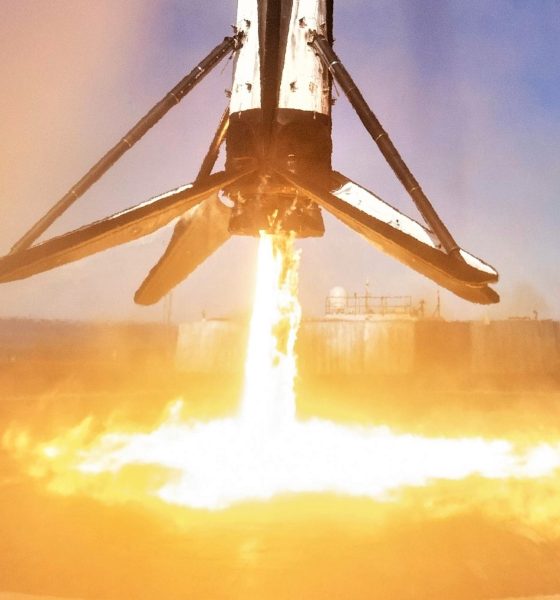
News
SpaceX hints at mystery Falcon 9 missions with record breaking launch target
Speaking at the 2019 Smallsat Symposium, SpaceX Vice President of Commercial Sales Jonathan Hofeller announced that the company will try to break the launch record it set last year in 2019. That record stands at 21 successful missions, while President and COO Gwynne Shotwell stated in a May 2018 interview that she was anticipating 24-28 launches in 2018 and ~18 in 2019.
Ranging from Crew Dragon transporting astronauts and a duo of Falcon Heavy missions to perhaps ten commercial satellite launches, 2019 will undoubtedly be full of major events for SpaceX. However, SpaceX’s publicly-available launch manifest suggests that there will be no more than 18 government and commercial missions ready for the company to place in orbit before 2019 is out, implying that Hofeller may be hinting at launches that are not yet public.
Last May, SpaceX Prez Gwynne Shotwell was projecting 24 to 28 launches for 2018 but more like 18 for 2019. 21+ may be an “aspirational goal,” unless they’re counting Starship Hopper: https://t.co/RDbdPLA2Z7
— Alan Boyle (@b0yle) February 7, 2019
In just the last two years (24 months), SpaceX has successfully launched Falcon 9 and Falcon Heavy an astounding 40 times, averaging approximately one launch every 2.5 weeks. In 2017, SpaceX demolished its own prior cadence record with 18 launches, a record the company’s exceptional workforce summarily proceeded to beat in 2018 with 21 successful missions launched. A vast majority of those 40 missions (27 to be precise) were the result of competitive, commercial contracts that SpaceX has been extremely successful at winning, thanks largely to the nearly unbeatable pricing of Falcon 9 and Heavy.
Much like most other launch providers, SpaceX plays its manifest extremely close to the chest, rarely revealing more than a blanket status update. For example, SpaceX’s website states that it has “has secured over 100 missions to its manifest, representing over $12 billion on contract.” Thanks to the general drought of official manifest information, the closest approximation to a real SpaceX manifest has traditionally been maintained by members of spaceflight fan communities like /r/SpaceX and NASASpaceflight.com, using the best aspects of organized crowdsourcing to create an extremely reliable snapshot of launch contracts scheduled within ~24 months.
However, compared to SpaceX’s claimed manifest of 100+ missions at an average cost per launch of ~$120M (twice Falcon 9’s $62M list price), crowdsourced SpaceX manifests – based on mostly public information – show fewer than 60 possible launch contracts between now and the end of 2024, a majority of which are for the US government (Crew and Cargo Dragon, Air Force GPS launches, and a few NASA spacecraft). Given SpaceX’s confident use of “secured” and “on contract”, the massive gap between public manifests and SpaceX’s claims leaves more than 40 launches almost completely in the dark.
- Falcon 9 B1046 lifts off for the third time with Spaceflight’s SSO-A rideshare mission. (Pauline Acalin)
- Falcon 9 B1047 lifts off from Pad 39A, November 2018. (Tom Cross)
- Falcon 9 B1048 appears out of the fog prior to its second orbital-class launch. (Pauline Acalin)
- Falcon 9 B1050 is seen here just after liftoff. GPS III SV01’s Falcon 9 will feature no grid fins or landing legs. ☹ (Tom Cross)
A Big Falcon Mystery
Hofeller’s Feb. 6th comment is thus just a tiny taste of SpaceX’s potential mystery manifest, indicating that the company has more than 21 payloads to launch in 2019 while public info reveals no more than 17-18 likely to be ready. Where, then, might Hofeller find an extra 4-5 missions that public observers would not normally be aware of?
The simplest answer least reminiscent of a conspiracy theory is Starlink, SpaceX’s global constellation of at least 4425 satellites. While it would be an extraordinary achievement, Reuters reported in October 2018 that CEO Elon Musk had gone as far as firing multiple senior managers of the young satellite program to install new managers with a singleminded goal: begin launching operational Starlink satellites by mid-2019. A little over six months after Musk’s Starlink shake-up, SpaceX has pivoted towards rapidly building and launching around ~1500 first-generation satellites with more conservative capabilities to lower orbits relative to the original Starlink specification.
- One of the first two prototype Starlink satellites separates from Falcon 9’s upper stage, February 2018. (SpaceX)
- SpaceX’s first two Starlink prototype satellites are pictured here before their inaugural Feb. 2018 launch, showing off a utilitarian design. (SpaceX)
SpaceX also received a major Starlink contract from the US Air Force Research Laboratory worth almost $29 million, $19.1M of which was dispersed to SpaceX in October 2018. As of late 2018, the company’s Starlink branch had already pivoted toward ramping up production of the first several batches of operational Starlink satellites. According to a number of employees, SpaceX’s first two Starlink prototype satellites – known as Tintin A and B – were a programmatic success and continue to operate in orbit today after proving out a number of critical Starlink technologies. As such, it’s not out of the question for operational Starlink launches to begin as early as mid-2019, although Musk’s aggressive schedule is likely more than a little overly optimistic.
Assuming Starlink is greeted with a perfect production ramp and the first 10-20 spacecraft make it to orbit in good health by June 2019, it’s at least not inconceivable that a second and third launch could follow, perhaps with a 3-month launch cadence (June/September/December). The chances of this happening are probably about as slim as they come, but it does offer one possible way for SpaceX’s apparent ~18-launch manifest to jump up to 21 or more missions. The next most probable route to 21+ launches involves at least one or two Starlink-specific launches, followed by another one or two launches for a secretive US government customer like the National Reconnaissance Office (NRO).
The top secret Zuma spacecraft could be alive and well doing exactly what it was intended to: https://t.co/bK6x38KyIL
— Tyler Rogoway (@Aviation_Intel) January 12, 2018
In January 2018, SpaceX successfully launched a spacecraft called Zuma with no known customer aside from a generic US military agency. Despite an ambiguous potential failure of the satellite – attributed to a Northrop Grumman deployment mechanism – just days after launch, a variety of anonymous sources indicated that Zuma was just the first in a series of new military satellites with a focus on SpaceX as the primary launch provider. The value of the intensely-secretive program was estimated to be in the billions of dollars, implying a veritable constellation of mystery satellites that could provide SpaceX several additional launch contracts.
Now a little over 12 months distant from Zuma’s bizarre debut, it’s conceivable that the next phase of the secretive satellite program is scheduled sometime in 2019. Ultimately, the general public is unlikely to learn about any potential mystery SpaceX launches until they are imminent, barring comments from executives or sourced leaks making their way into the news. For now, we wait.
Check out Teslarati’s newsletters for prompt updates, on-the-ground perspectives, and unique glimpses of SpaceX’s rocket launch and recovery processes!

Elon Musk
GM CEO Mary Barra says she told Biden to give Tesla and Musk EV credit
“He was crediting me, and I said, ‘Actually, I think a lot of that credit goes to Elon and Tesla…You know me, Andrew. I don’t want to take credit for things.”

General Motors CEO Mary Barra said in a new interview on Wednesday that she told President Joe Biden to credit Tesla and its CEO, Elon Musk, for the widespread electric vehicle transition.
She said she told Biden this after the former President credited her and GM for leading EV efforts in the United States.
During an interview at the New York Times Dealbook Summit with Andrew Ross Sorkin, Barra said she told Biden that crediting her was essentially a mistake, and that Musk and Tesla should have been explicitly mentioned (via Business Insider):
“He was crediting me, and I said, ‘Actually, I think a lot of that credit goes to Elon and Tesla…You know me, Andrew. I don’t want to take credit for things.”
GM CEO Mary Barra said to Andrew Sorkin at the New York Times Dealbook Summit that she pulled President Biden aside and said Tesla CEO @elonmusk deserved the credit for EVs:
“He was crediting me, and I said, ‘Actually, I think a lot of that credit goes to Elon and Tesla,’” Barra… pic.twitter.com/OHBTG1QfbJ
— TESLARATI (@Teslarati) December 3, 2025
Back in 2021, President Biden visited GM’s “Factory Zero” plant in Detroit, which was the centerpiece of the company’s massive transition to EVs. The former President went on to discuss the EV industry, and claimed that GM and Barra were the true leaders who caused the change:
“In the auto industry, Detroit is leading the world in electric vehicles. You know how critical it is? Mary, I remember talking to you way back in January about the need for America to lead in electric vehicles. I can remember your dramatic announcement that by 2035, GM would be 100% electric. You changed the whole story, Mary. You did, Mary. You electrified the entire automotive industry. I’m serious. You led, and it matters.”
People were baffled by the President’s decision to highlight GM and Barra, and not Tesla and Musk, who truly started the transition to EVs. GM, Ford, and many other companies only followed in the footsteps of Tesla after it started to take market share from them.
Elon Musk and Tesla try to save legacy automakers from Déjà vu
Musk would eventually go on to talk about Biden’s words later on:
“They have so much power over the White House that they can exclude Tesla from an EV Summit. And, in case the first thing, in case that wasn’t enough, then you have President Biden with Mary Barra at a subsequent event, congratulating Mary for having led the EV revolution.”
In Q4 2021, which was shortly after Biden’s comments, Tesla delivered 300,000 EVs. GM delivered just 26.
News
Tesla Full Self-Driving shows confident navigation in heavy snow
So far, from what we’ve seen, snow has not been a huge issue for the most recent Full Self-Driving release. It seems to be acting confidently and handling even snow-covered roads with relative ease.

Tesla Full Self-Driving is getting its first taste of Winter weather for late 2025, as snow is starting to fall all across the United States.
The suite has been vastly improved after Tesla released v14 to many owners with capable hardware, and driving performance, along with overall behavior, has really been something to admire. This is by far the best version of FSD Tesla has ever released, and although there are a handful of regressions with each subsequent release, they are usually cleared up within a week or two.
Tesla is releasing a modified version of FSD v14 for Hardware 3 owners: here’s when
However, adverse weather conditions are something that Tesla will have to confront, as heavy rain, snow, and other interesting situations are bound to occur. In order for the vehicles to be fully autonomous, they will have to go through these scenarios safely and accurately.
One big issue I’ve had, especially in heavy rain, is that the camera vision might be obstructed, which will display messages that certain features’ performance might be degraded.
So far, from what we’ve seen, snow has not been a huge issue for the most recent Full Self-Driving release. It seems to be acting confidently and handling even snow-covered roads with relative ease:
FSD 14.1.4 snow storm Ontario Canada pic.twitter.com/jwK1dLYT0w
— Everything AI (@mrteslaspace) November 17, 2025
I found the steepest, unplowed hill in my area and tested the following:
• FSD 14.2.1 on summer tires
• FSD 14.2.1 on winter tires
• Manual drivingBut I think the most impressive part was how FSD went DOWN the hill. FSD in the snow is sublime $TSLA pic.twitter.com/YMcN7Br3PU
— Dillon Loomis (@DillonLoomis) December 2, 2025
Well.. I couldn’t let the boys have all the fun!
Threw the GoPro up and decided to FSD v14.2.1 in the snow. Roads were not compacted like the other day, a little slippery, but overall doable at lower speeds. Enjoy the video and holiday music 🎶
Liked:
Took turns super slow… pic.twitter.com/rIAIeh3Zu3— 🦋Diana🦋 (@99_Colorado) December 3, 2025
Moving into the winter months, it will be very interesting to see how FSD handles even more concerning conditions, especially with black ice, freezing rain and snow mix, and other things that happen during colder conditions.
We are excited to test it ourselves, but I am waiting for heavy snowfall to make it to Pennsylvania so I can truly push it to the limit.
News
Tesla hosts Rome Mayor for first Italian FSD Supervised road demo
The event marked the first time an Italian mayor tested the advanced driver-assistance system in person in Rome’s urban streets.

Tesla definitely seems to be actively engaging European officials on FSD’s capabilities, with the company hosting Rome Mayor Roberto Gualtieri and Mobility Assessor Eugenio Patanè for a hands-on road demonstration.
The event marked the first time an Italian mayor tested the advanced driver-assistance system in person in Rome’s urban streets. This comes amid Tesla’s push for FSD’s EU regulatory approvals in the coming year.
Rome officials experience FSD Supervised
Tesla conducted the demo using a Model 3 equipped with Full Self-Driving (Supervised), tackling typical Roman traffic including complex intersections, roundabouts, pedestrian crossings and mixed users like cars, bikes and scooters.
The system showcased AI-based assisted driving, prioritizing safety while maintaining flow. FSD also handled overtakes and lane decisions, though with constant driver supervision.
Investor Andrea Stroppa detailed the event on X, noting the system’s potential to reduce severe collision risks by up to seven times compared to traditional driving, based on Tesla’s data from billions of global fleet miles. The session highlighted FSD’s role as an assistance tool in its Supervised form, not a replacement, with the driver fully responsible at all times.
Path to European rollout
Tesla has logged over 1 million kilometers of testing across 17 European countries, including Italy, to refine FSD for local conditions. The fact that Rome officials personally tested FSD Supervised bodes well for the program’s approval, as it suggests that key individuals are closely watching Tesla’s efforts and innovations.
Assessor Patanè also highlighted the administration’s interest in technologies that boost road safety and urban travel quality, viewing them as aids for both private and public transport while respecting rules.
Replies on X urged involving Italy’s Transport Ministry to speed approvals, with one user noting, “Great idea to involve the mayor! It would be necessary to involve components of the Ministry of Transport and the government as soon as possible: it’s they who can accelerate the approval of FSD in Italy.”
